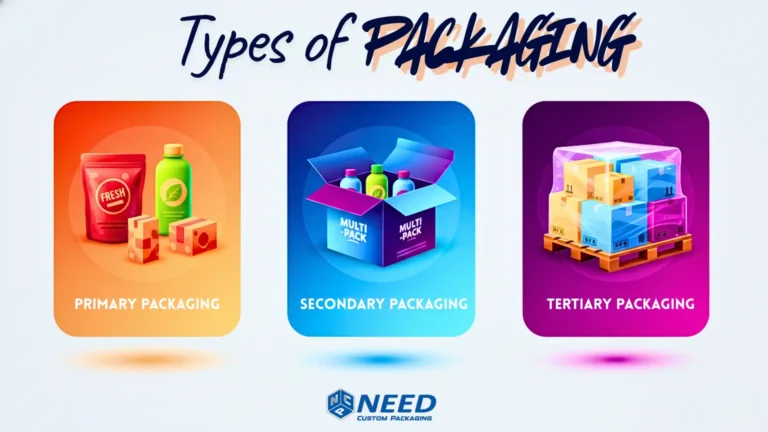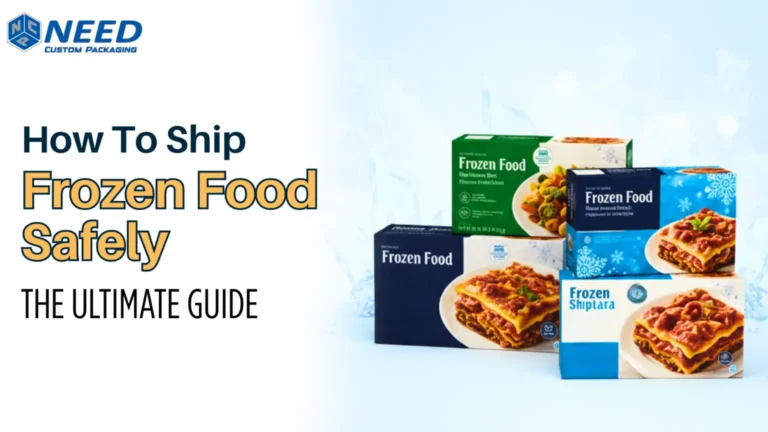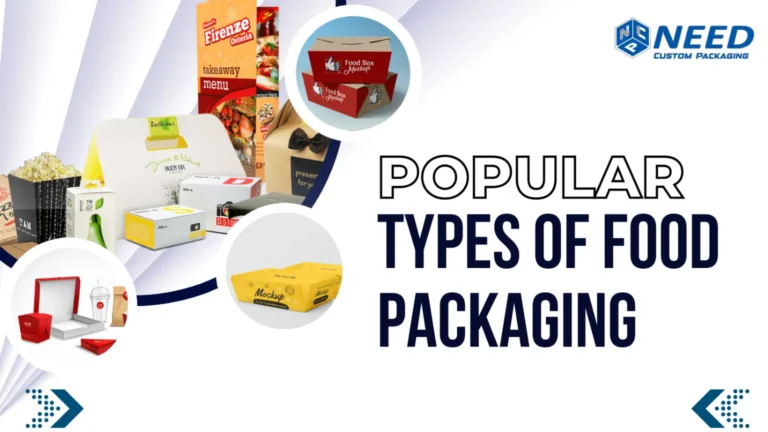Have you noticed the small, colored dots on food packaging and wondered what they refer to? These mysterious square marks featuring black, green, blue, or red colors ignite curiosity because they come without an explanation. These colored dots don’t indicate the food’s freshness, safety, or spoilage.
These “process control patches” or “printer’s color blocks” are indicators for the packaging production process. They have an important role in the quality control in the printing process of packaging materials, ensuring consistent and accurate printing of colors. Knowing the real purpose of these printer color codes is necessary for designers and consumers to understand the products on the shelves.
Role of Colored Dots in Packaging Printing
Are colored dots on food packages safe? Yes, these colored dots are safe for consumers. The printer’s color blocks or packaging color blocks play an influential role in printing and packaging. These colored circles on food packages convey two essential purposes.
- Selective colors align with the packaging to make the design great and engage customers.
- Maintain the brand consistency with accurate and uniform colors across packaging products.
The use of a specific color scheme for each packaging reveals its relation to the box. The printer can easily detect the color mismatch or deficiency. Therefore, process control patches in the food packaging marks convey necessary details to the printer.
These colored dots on custom food boxes allow customers to understand the nature of the product inside the boxes. You must remember that each color comes with its own purpose of colored dots on product packaging.
Basic Color Patches for the Printing
The three main color patches for food packaging printing are:
- Cyan
- Magenta
- Yellow
The purpose of CMYK color alignment is to produce an ideal spectrum of colors via the printing method. In CMYK, K stands for black alongside Cyan, Magenta, and Yellow, which are primary colors for mixing in different proportions to create a color for high-quality printing.
Process Control Patches
Colored dots are control patches in the printing procedure. Accurate consistency is necessary to ensure that a distinctive color matches the packaging ad help printers to verify correct colors. The printer checks that the dots match the desired brand colors after printing a box.
These color dots also differentiate between fake and real products. In the packaging printing process, these dots can highlight the mistakes, conveying the real problem with the final product’s look.
Printing Quality Control
CMYK printing process ensures ideal alignment of color registration marks. The fundamental purpose is to convey the reference for quality control during the printing process. This is how packaging production symbols with print quality help:
- Color Consistency: The circles enable printers to check and maintain a consistent color scheme.
- Ink Density: Printers can ensure the ideal ink color calibration by checking these colored circles. A proper ink density is necessary for achieving the ideal colors while preventing bleeding or smudging.
- Registration: Proper alignment of various color layers is important in the multi-color printing process. Colored circles allow printers to check the registration for the correct alignment of each color.
- Troubleshooting: Colored circles allow technicians to identify and rectify the different printing issues, such as color misalignment or variation.
What Do the Colored Circles on Food Packaging Mean?
It is essential to understand colored spots on labels and what they mean because they serve different purposes, allowing customers to understand and identify important details about products. Let’s learn how to read printing dots on food packaging to understand better.
Represent Flavors
Colored dots on food packaging represent a variety of flavors for products like snack bars, candy, and chips. For instance, it reveals whether the product’s flavor is herb-based or spicy.
Provide Dietary Info
The colored marks on boxes also convey the essential information, such as whether a product is organic, vegan, or gluten-free. Each color is a representation of various nutritional values. Therefore, customers can easily find the products that match their dietary requirements.
Meet Health Goals
Why are there colored squares on packaging labels? These represent the quality control and color printing. These marks present different nutritional content, such as low-sugar, high-fiber, or low-fat. It helps customers to locate different food products that meet their health goals.
Warn For Allergens
Colored circles help people with food allergies know the presence of different allergens, such as dairy, wheat, or peanuts. Therefore, customers can avoid products that cause allergic problems.
Certify The Product
Colored circles indicate the crucial certifications. It is necessary for potential customers to be aware of these specific endorsements.
Why are There Colored Squares on Packaging Labels?
There is immense importance of colored dots on food packaging, differentiating brands. These circles help each customer identify the product and meet their dietary and taste requirements. It is essential to understand the meaning behind color marks on food wrappers. Let’s take a look at different common colored dots on products and their meanings.
Red Circles
- Flavor: Represent the hot or spicy flavors.
- Dietary Details: Indicate the high-calorie or energetic content.
Green Circles
- Flavor: Represent the vegetable-based, herbal, and natural flavors.
- Dietary Details: Indicate natural ingredients or organic products.
Yellow Circles
- Flavor: Present tangy or citrus flavors.
- Dietary Details: Convey the product’s safety for Diabetic patients.
Blue Circles
- Flavor: Present berry, minty, or cool flavors.
- Dietary Details: Convey the presence of medical-related ingredients.
Purple Circles
- Flavor: Show grape or berry flavors.
- Dietary Details: Showcase the products with additional minerals or vitamins.
Orange Circles
- Flavor: Show tropical or orange fruits.
- Dietary Details: Showcase energetic or high-fiber content.
Black Circles
- Flavor: Show strong or bold flavors such as coffee or dark chocolate.
- Dietary Details: Showcase the chemical content.
White Circles
- Flavor: Symbolize unflavored, vanilla, or plain content.
- Dietary: Represent the lactose-free or dairy-free products.
What are the Three Color Patches for the Packaging Printing Process
Cyan, yellow, and black are three basic colors in food label printing. These primary colors instruct the printer to produce various colors during the printing process to maintain the relevancy and consistency of packaging.
It is not necessary to print these colors equally on packaging boxes because businesses can use colored dots on food packaging to allow customers to make well-informed decisions. The main purpose of using three colors in the printing process is to convey important information to clients.
Do Colored Blocks on Packaging Indicate Freshness?
No, colored blocks on packaging don’t indicate the freshness of products. These marks are usually available near the edges of wrappers or labels. These process control patches or printer’s color blocks are used in the printing process for the consistent and correct alignment of colors.
Colored blocks on packaging have nothing to do with indicating food freshness. Therefore, you need to check the freshness of different food products through their storage instructions or expiration dates.
What are the Colored Squares on the Bottom of Food Bags?
The colored squares on the edges or bottom of food bags indicate the printing quality control of the packaging. These squares help manufacturers use the correct ink colors during the printing process.
Human operators or automated sensors use these colored dots on food packaging during production. It is important to note that squares don’t provide consumer-created or nutritional details. Therefore, colored squares are not the source of product details for customers.
Do Colored Dots on Packaging Indicate Chemicals or Expiration?
No, Colored dots on packaging don’t indicate chemicals or expiration, despite the popular myths. These colorful marks are used in the printing process to ensure the best color accuracy. Dots ensure the ideal alignment of printing machines while utilizing the perfect ink combinations. You can check the nutritional label and “best by” on the package to get accurate information on ingredients and expiration dates.
Final Thoughts
The colored dots on food packaging are crucial components of their packaging and printing processes. These marks ensure that packaging aligns with quality standards, ensuring ideal registration, ink density, and color consistency. At Need Custom Packaging, we offer these colored dots for your specific products.









